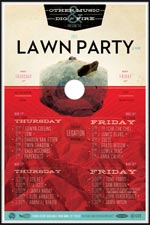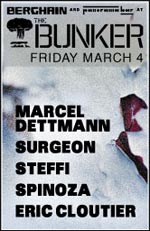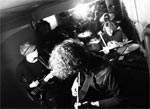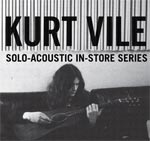| |
|
|
|
|
|
|
| |

$16.99 LP/EP


$9.99 MP3


|
|
KIP HANRAHAN
Desire Develops an Edge
(American Clave)
 Preview Songs on Other Music's Download Store Preview Songs on Other Music's Download Store
Kip Hanrahan is a New York composer/producer/percussionist who founded the American Clave label in the late 1970s, documenting a unique blend of downtown styles that deeply concentrate the concepts and sounds of the NYC melting pot. Hanrahan barely performs on his own records; instead, he acts as maestro or much like a film director, assembling a top-notch cast of characters and having them play his complex arrangements, overflowing with poly-rhythms and multiple harmonies, drawing from the musical heritages of Cuba, Haiti, Brazil, Argentina, and even US/UK rock music. He has worked with everyone from tango master Astor Piazzolla to Jack Bruce of Cream, renowned jazz producer and saxophonist Teo Macero, and even New York no wave band DNA, whose 12" EP A Taste of DNA was one of American Clave's first releases.
On Desire Develops an Edge, Hanrahan's second album, he directs an ensemble that includes jazz musicians like Steve Swallow, Teo Macero, Jamaaladeen Tacuma, and John Stubblefield, Latin musicians including Jerry Gonzalez, Puntilla Orlando Rios, and Milton Cardona, rockers Arto Lindsay of DNA and Feelies/Golden Palominos drummer Anton Fier, and Haitian guitarists Elysee Pyronneau and Tiplume Ricardo Franck, among others. Topping off the arrangements are the vocals and bass playing of Jack Bruce, who would go on to a long and fruitful collaborative relationship with Hanrahan. Bruce has never sounded better; he injects raw feeling and delicate sensitivity into Hanrahan's emotionally complex lyrics, which balance Borges-like descriptive observations of minute fragments of time with socio-political commentary and sexual complexity. The band, quite simply, are incredible, trading off poly-rhythms, weaving plenty of tiny interlocking fragments together into rich tapestries of sound that honestly have no equal in terms of the quality of musicianship, the diversity of influence, and the strength of collaboration. They create lively, sun-soaked dance tunes, soul-searching laments, soft bossa nova whispers and gut-busting, fist-clenching snapshots of despair -- sometimes in the course of one song. To hear Lindsay's no wave 12-string skronk used as a percussive and textural accompaniment to interlocking Santeria drums, fiery Latin brass, and Haitian compass guitar is brilliant, and that's what makes the album such a success -- Hanrahan knows his players' strengths, he knows how to write for them and where to place them, and he understands the effect those experiences will have on the players at the end of the session.
This is a desert island album for me; it changed the way I heard music and approached making it, it raised a bar quite high and taught me that it's still possible to create records that challenge and excite the notions of genre by blending the languages of many into one unified form of communication. Absolute highest recommendation. [IQ]
|
|
| |
|
|
|
|
|
|
|


 Jamie Woon
Jamie Woon
 Anna Calvi
Anna Calvi 



































